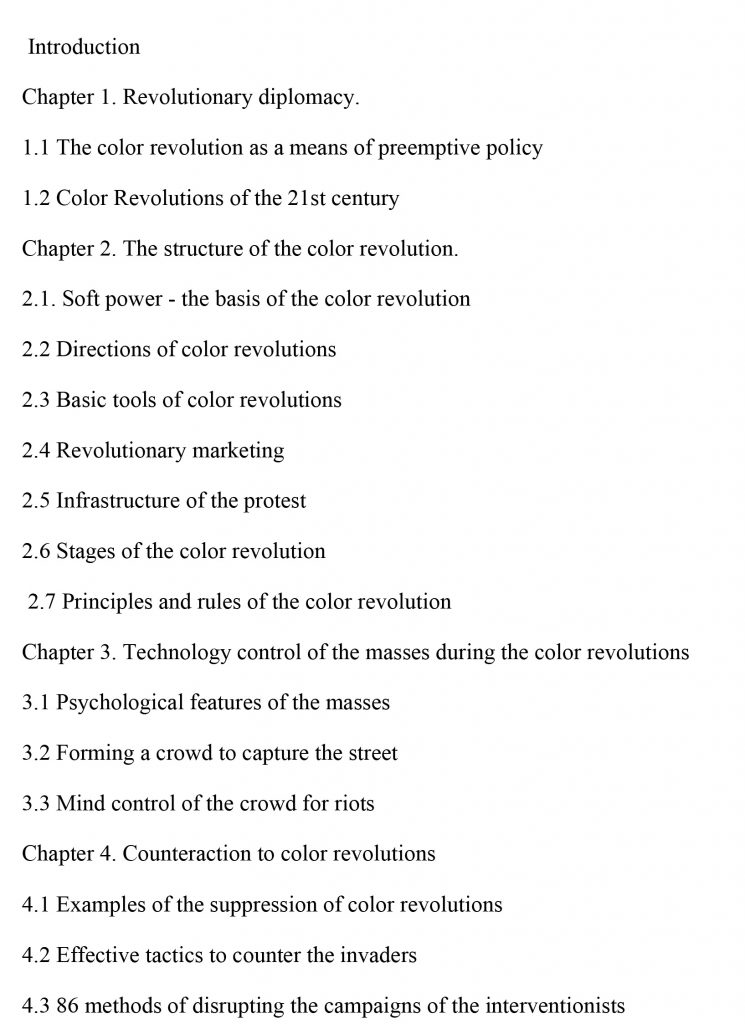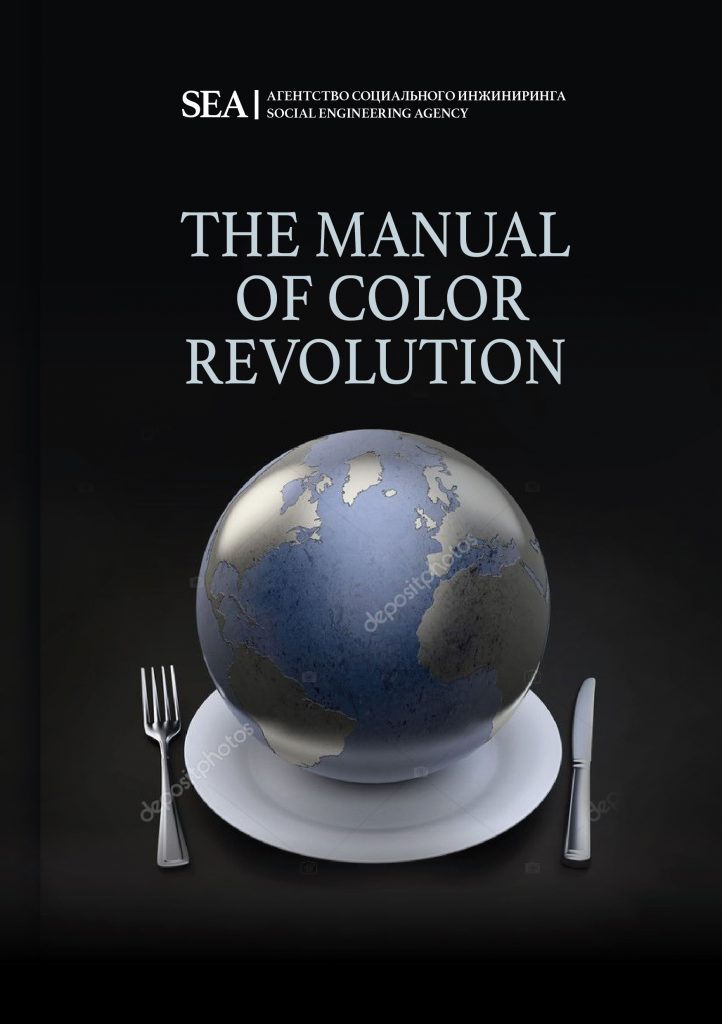New analytical center, which is engaged in the intellectual development of the topic of coups and “color revolutions,” presented the “Color Revolution Methodology” – the first systematic study of state coups organized from abroad. The study describes such important elements as mass management, protest infrastructure, revolutionary marketing, etc.
In the XXI century there are up to 12 attempts of color revolutions per year. Soft power technology has become the main tool of global diplomacy. About half of attempts led to changes in the existing regimes, which indicates high efficiency of social engineering as an instrument of pre-emptive policy. Thus, the “color diplomacy” ousted the classical methods of influence on the background. In order to counter such challenges effectively, Russia needs both mirror and asymmetric countermeasures.
The book examines in detail the 36 attempts of color revolutions made in the twenty-first century. About half of them led to changes in the existing regimes, which indicates high efficiency of soft power. In addition, the agency has developed effective tactics to counter external interference. So the book presents 82 methods of disrupting the campaigns of the interventionists, which makes it a practical tool for countering unarmed aggression.
Earlier, the head of the State Duma Committee on International Affairs, Leonid Slutsky, welcomed the creation of Social Engineering Agency, which will develop measures to combat the “color” revolutions.








